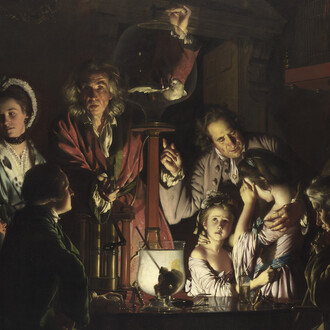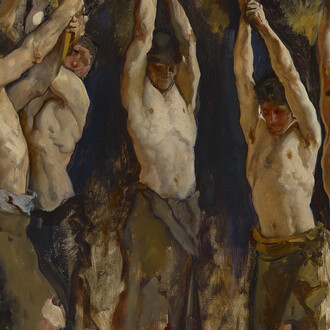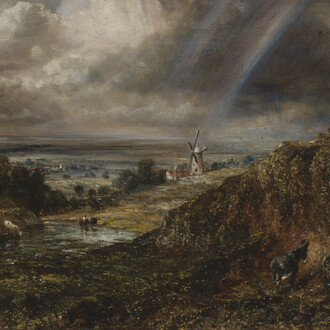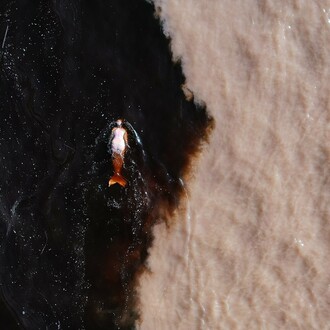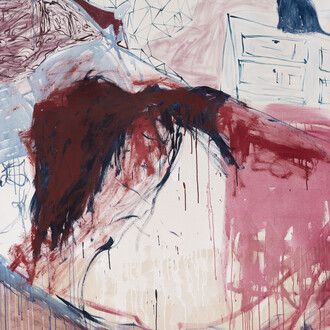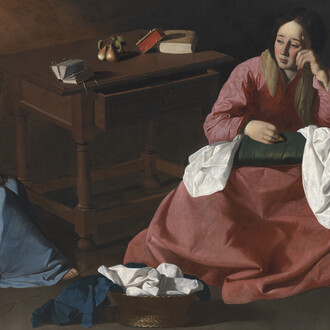It is easy to follow, but it is uninteresting to do easy things. We find out about ourselves only when we take risks, when we challenge and question.
(Magdalena Abakanowicz)
October Gallery presents Material sensibilities, an exhibition of vital and challenging works by Nnenna Okore, Naomi Wanjiku Gakunga, Susanne Kessler, LR Vandy, Jukhee Kwon, Sokari Douglas Camp and Sylvie Franquet, which explore the liminal boundaries of creative materiality, alongside new works by Xanthe Somers, Theresa Weber, Gaia Ozwyn and Khadija Jayi.
Material sensibilities brings together sculptures, ceramics and paintings, wherein artists explore the complex relationship between their chosen materials and the interactive forms of expression resulting as they interrogate and respond to the shifting outcomes that emerge—sometimes in novel, unanticipated forms. Deploying a multitude of processes: cut, weave, burn, paste, rip, weld and embed, each piece invites the viewer to contemplate the dynamic dance between the artist’s hand and materiality.
Nnenna Okore’s practice investigates subjects from the natural world with an emphasis on transformation and ephemerality. Each sculpture is created through the repetitive and labour-intensive techniques of disassembly and reconstruction – teasing materials apart, twisting constituents together, dyeing, sewing, etc. – applied to natural and often found materials. The hanging wall sculpture, Hide, is formed of hand- rolled clay elements, fired and sewn into burlap cloth. This reiterative process of physical mark-making conjures a textural experience that is at once both dense and delicate.
Naomi Wanjiku Gakunga is known for her wall-hanging sculptures, imaginatively created from oxidised sheet metal and steel wire, adorned with various supplementary objects: washers, fabric, beads and seeds. While the techniques Gakunga employs are common to the fibre arts across many traditions, her metallic materials are not. Encino, Spanish for an oak tree and a well-known town in California, is a hanging woven of steel wire adorned with acorns. Gakunga artlessly transposes between interpretations of sculptural form and the representation of the natural object. Her innovative approach, combining traditional weaving techniques with contemporary materials and processes, allows the viewer to explore multiple readings while admiring the skill with which she manipulates her unlikely medium.
Susanne Kessler’s creative explorations employ an impressive range of media, which include works on paper, photography, paintings, sculptures and installations. Based in Berlin and Rome, Kessler is profoundly conscious of the historical cycles of growth and collapse of both cities and civilisations, fascinated by the multi layered impacts of time. Her triptych, Aggregations, comes from a period spent in New York at a time when collapsed remains and reconstruction stood side by side. The artwork refers to the recognisable iron structures of the One World Center, rising from the ashes of the ground zero site of the destroyed Twin Towers. For Kessler every abstract line has a story behind it and for her, ‘line’ is the foundation of significance and symbolism; it materialises the concept of an artist’s aesthetic and is never arbitrary.
Also working with found objects, metal components and rope, LR Vandy transforms these humble materials into a variety of artworks, from astonishing ‘masks’ made from model boat hulls to vibrant sculptures that unpack the knotted histories of trade, power and gender. With a flair for outlining hidden histories, these works reference the multi-layered history and heritage of the African diaspora, while celebrating the abstracted female form. Her latest dancing rope sculptures rotate around the central axis of disused carpet shuttles, themselves another icon of the female form. The pieces are animated with Manilla rope, coloured cotton thread and miscellaneous found objects such as cogs, pipes and washers.
Theresa Weber presents Archipelago Network, from her ‘cartographies’ series, a composition inspired by multiple organic shapes: a fusion of the archipelago, coral reefs, rhizomes and the double helix. Weber’s tactile works are informed by a captivating blend of cultural, historical and mythological references, reflecting her conceptual approach to the ever-changing nature of Identity. Archipelago Network, presents a richly textured collage of materials including silicone, resin, beads, corals and shells on wooden board. The work reveals an intuitive mapping of the intersectional body from a de-colonial perspective that resists the western idea of the ‘grid’ and/or linear time in favour of organic forms and energy fields deployed as an act of resistance.
Newly presented works by the ceramicist Xanthe Somers are informed by post-colonial contexts, with reference to Zimbabwe, her country of birth. Combining elements of the Zimbabwean traditional material culture of weaving and wax fabric dyeing of textiles, the bodies of her intricate pieces are hand-coiled in traditional fashion before being disturbed by having their surfaces punctured, woven or adorned with meticulously painted details. These idiosyncratic creations evoke a sense of play, by deliberately combining excessive ornamentation with veiled political commentary that draws attention to women's work, cheap labour, overconsumption and the impact of eco-racist practices throughout the Global South.
The paintings of Gaia Ozwyn find their inspiration in suggestions of both earthly and ethereal landscapes. Concerned with the duality of nature and the complementary notions of belonging and separation, Ozwyn merges sculptural elements with painterly gestures to promote a dialogue between the concrete and the ephemeral, thus inviting observers into a realm where the tactile and conceptual converge and where personal narratives can echo universal truths. Raised between Afro-Caribbean and British cultural traditions, Ozwyn’s work explores the harmonies and tensions arising between contrasting aspects of her own identity, reflecting upon the mysteries of a quasi-belonging that reflects inclusion and isolation in equal measures.
Other highlights include works that address gender inequality based on the personal experiences of the Moroccan artist, Khadija Jayi. Jayi’s sculptural works offer multiple dimensions as she contemplates identity, tradition, power and imagination. Her work Volcan is created by fire and by burning paper. By using a blow-torch as a metaphorical agent of creation and destruction she loads paper with indelible marks and permanent scars. Jayi often adopts photographs of unknown women as her chosen material, she cuts, burns, scorches and deflects these images from their usual representative function of the individuals. These scorched and incomplete residues serve as a commentary on the exclusion of the feminine from the public realm.
Originally from South Korea but now working in Italy, Jukhee Kwon, addresses corresponding themes of ‘creation and destruction’ by meticulously cutting and slicing into ‘found or abandoned’ books to transform them into cascading sculptures. The artist constantly plays with ideas of complementary opposites, absence & presence, birth and death and other natural cycles. The delicate weaving of her chosen material, paper, creates fragile, organic tendrils, which extend and explore ambient surface spaces.
Sokari Douglas Camp is represented by an exuberant steel sculpture with flowers and pineapples painted in bright yellow acrylics. In her inimitably flamboyant style, Douglas camp takes inspiration from the vibrant country of Suriname, celebrating the flora, fruits and people of this ‘exotic’ place. This whimsical playfulness continues in the vivid works of Sylvie Franquet, wherein she subverts her materials by unpicking and restitching graffiti and text onto the needlepoint patterns she finds, which are often reworkings of paintings by male artists.










